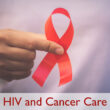HIV in Women
Recognizing HIV/AIDS in Women: Health Concerns, Risks, and Safeguarding Children
The global impact of HIV/AIDS is disproportionately felt by women. This blog article examines the particular difficulties that women encounter when it comes to HIV transmission, their general health status with the infection, and the critical function that PMTCT plays in preventing HIV transmission.
Table of Contents

Biological Weaknesses and Elevated Risk of Transmission
HIV in Women
A number of biological variables make women more likely than men to contract HIV:
- Genital Tract: Women are more likely to be exposed to HIV during unprotected intercourse due to the bigger genital mucosal surface area.
- Menstrual Cycle: Having ulcers or inflammation in the vagina and cervix during a manstrual cycle can make a person more susceptible to HIV.
- Co-diseases: Inflammation of the vaginal tract brought on by sexually transmitted infections (STIs) such as chlamydia or bacterial vaginosis increases the chance of HIV transmission.
Past Transmission: HIV-Affected Women’s Health
HIV in Women
There are additional health problems for women living with HIV:
- Cervical Cancer: Because HIV compromises immune function, women are more vulnerable to HPV-related cervical cancer. It’s critical to have routine cervical cancer screenings.
- Reproductive Health: Pregnancy-related issues are more likely to occur when HIV is present and can impact fertility. However, pregnant women living with HIV can have healthy pregnancies if they receive the right treatment and stick to ART.
- Mental health: Women living with HIV may experience increased rates of anxiety and depression due to the emotional strain of their diagnosis, stigma, and possible reproductive issues.
Protecting the Future Generation through the Prevention of Mother-to-Child Transmission (PMTCT)
HIV in Women
Thankfully, there are very successful methods available to stop HIV from being passed from mother to kid. Programs for PMTCT are essential in lowering the incidence of HIV in children.
- Antiretroviral therapy (ART): Pregnant HIV-positive women who take ART during pregnancy, childbirth, and nursing can dramatically lower the risk of HIV transmission to their unborn children. By successfully suppressing the viral load, antiretroviral therapy (ART) reduces the level of HIV in the blood and breast milk.
- Safe Delivery Procedures: There are ways to reduce the danger of transmission even more, such as avoiding vaginal delivery when the virus load is high.
- Infant prophylaxis: To further lower the risk of transmission, newborns born to HIV-positive mothers may be treated with antiretroviral medication for a brief period of time.
HIV in Women
The likelihood that mothers living with HIV will give birth to children who are HIV-negative is greatly increased by PMTCT programs. Women living with HIV are capable of having safe pregnancies and raising HIV-negative children if they have regular access to these services and continued healthcare assistance.
Educating and Assisting Women with HIV
HIV in Women
For women living with HIV, early diagnosis, access to efficient treatment, and all-encompassing healthcare assistance are essential. Here are some strategies to empower HIV-positive women:
- HIV Testing and Education: Making HIV testing and education programs more widely available helps women take charge of their sexual and reproductive health by educating them about the risks involved.
- Reducing stigma: By battling discrimination and stigma, women can seek care without feeling judged or afraid.
- Social Support: Giving women living with HIV access to social support networks helps them manage the emotional difficulties and enhances their general wellbeing.
HIV in Women
HIV does not determine a woman’s future or state of health. Women living with HIV can lead long, healthy lives and create happy families if they receive the right care, have access to healthcare resources, and are supported in their communities.
HIV in Women
Recall that being transparent with healthcare providers is essential. Women living with HIV should talk to their healthcare team about their worries, their reproductive objectives, and their access to PMTCT programs.


